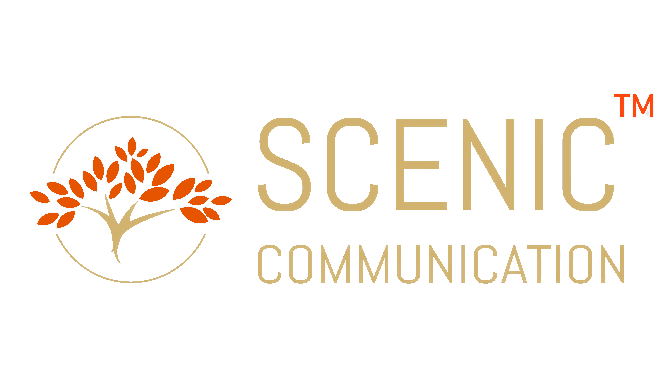Defining your Audience through PR: A Crucial Step in Effective Communication

In the world of PR, understanding your target audience is paramount to the success of any organization. Whether you are launching a new product, promoting a service, or managing a crisis, knowing who you are trying to reach and how to effectively communicate with them is crucial. This is where defining your audience through PR comes into play. When you understand who you’re communicating with, you can tailor your message to their needs and interests. This makes your content more engaging and relevant, which increases the chances that it will be seen and shared. There are a number of factors to consider when defining your audience, such as their demographics, psychographics, and level of knowledge about the topic at hand. You can also use tools like Google Analytics to learn more about your audience’s online behavior.
Once you have a good understanding of your audience, you can start to create communications that they will find valuable. This could include press releases, media pitches, social media posts, or email campaigns. The key is to create communications that are relevant to their interests and that address their needs. By taking the time to define your audience, you can create communications that are more likely to be successful. This will help you to achieve your PR goals, such as building brand awareness, generating media coverage, or driving sales.
Here are some key steps to help you navigate how to build a pillar strong bond towards your target audience are as follows:
-
Conduct Market Research:
Conducting marketing research thoroughly can help a PR professional to gain insights into industry, competitors, and potential customers. Tools such as surveys, focus groups, and social media listening help to gather information on demographics, preferences, and behaviors of your target audience.
-
Identify Key Stakeholders:
Gathering necessary data, identify the key stakeholders who are most likely to be interested in your product or service. This could include consumers, investors, media outlets, social influencers, or community organizations. Understanding the needs and interests of each stakeholder group will enable you to tailor your messaging accordingly.
-
Generating Buyer Personas:
Through developing buyer personas that represent your ideal customers can be beneficial in the long run. These personas should be detailed profiles that encompass demographic information, motivations, pain points, and communication preferences. This exercise will help to understand the target audience on a deeper level and craft messages that resonate with them.
-
Segment Your Audience:
Segment your audience based on common characteristics such as age, gender, location, interest, or purchasing habits. This will allow you to create targeted PR strategies and tactics for each segment, ensuring that your message reaches the right people at the right time.
-
Utilization of Media Monitoring Tools:
Utilize media monitoring tools to track conversations, competitions, and sentiment surrounding your brand or industry. This will help you stay informed about the perceptions and opinions of your audience and allow you to make informed decisions about your PR efforts.
-
Engage in Two-Way Communication:
Effective PR is not just about broadcasting messages; it is also about listening and engaging in meaningful conversations with your target audience. Use social media, online forums, and customer feedback channels to gather insights, address concerns, and build relationships with your target audience.
-
Utilize Media Outlets:
Explore different media outlets, both traditional and digital, that your target audience engages with. Research the topics, styles, and formats that resonate with them. This will enable you to craft messages and stories that align with their interests and preferences.
-
Measure and Adjust:
Finally, regularly measure the effectiveness of your PR efforts and adjust as needed. Use metrics such as website traffic, social media engagement, media coverage, and customer feedback to gauge the impact of your communication strategies and refine your approach over time.
Thus, actively engaging with your audience, you can gain a deep understanding of who you are trying to reach. This knowledge will enable you to craft compelling messages, select appropriate communication channels, and develop strategies that resonate with your audience. With a strategic approach to audience definition, you can maximize the effectiveness of your PR campaigns and drive tangible results for your business. Remember, audience definition is an ongoing process that requires continuous monitoring and adaptation to stay relevant in an ever-changing marketplace.
Why Scenic Communication?
DIGITAL PR & MARKETING SOLUTIONS FOR INDIAN STARTUPS AND BUSINESSES
We have created a distinctive advantage by giving holistic and Integrated Marketing Communications solutions to our client’s needs. Best PR Agency in Mumbai – Scenic Communication, therefore takes pride in not only providing effective public relations solutions to a brand but also with its girth, width and penetration, provide integrated communications solutions to the brand objectives of a client. With our strategic alignments and specialists on board we have geared innovation and value creation into all aspects of Brand & Reputation building. Having had domain expertise in multi-dimensional categories like – Corporate & Finance, Education, Real Estate, Infrastructure, Automobiles, IT & ITES, Government Development Boards, Tourism & Hospitality, Retail, FMCG, Fashion and the Entertainment industry; we provide innovative communications programs that focus on tangible business results.
Visit Scenic Website : https://sceniccomm.in/


